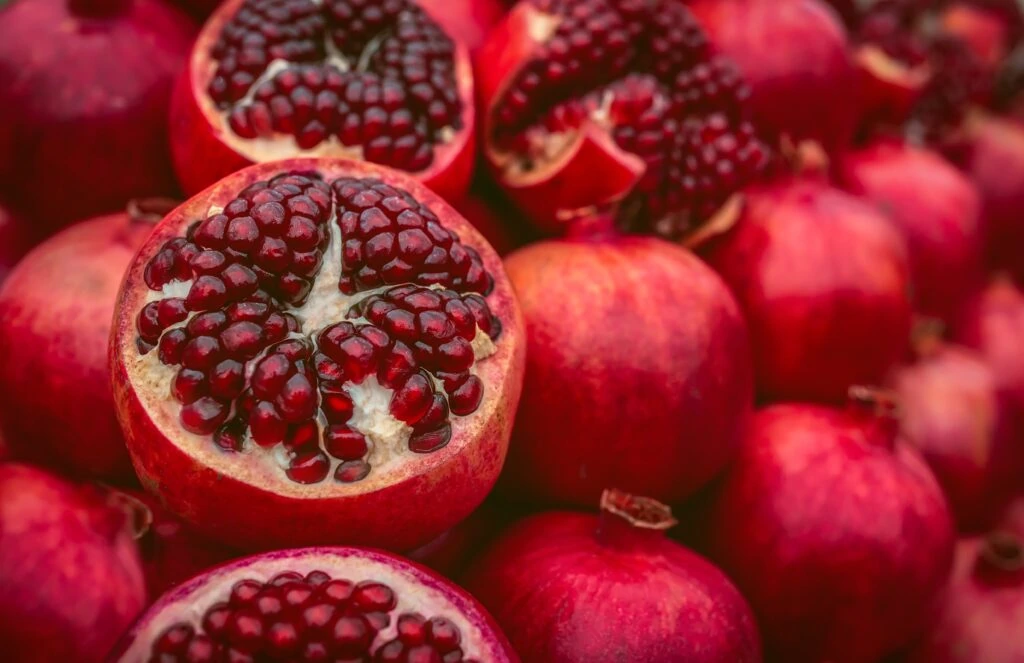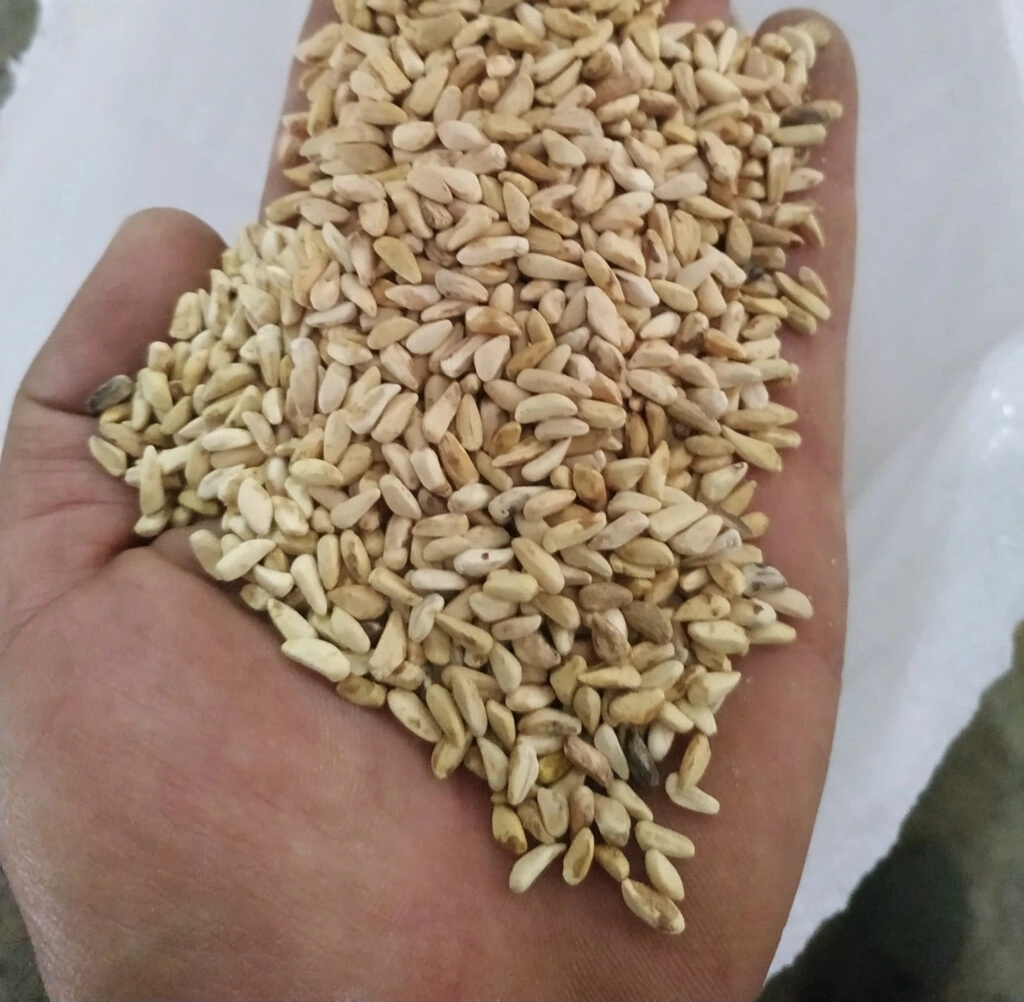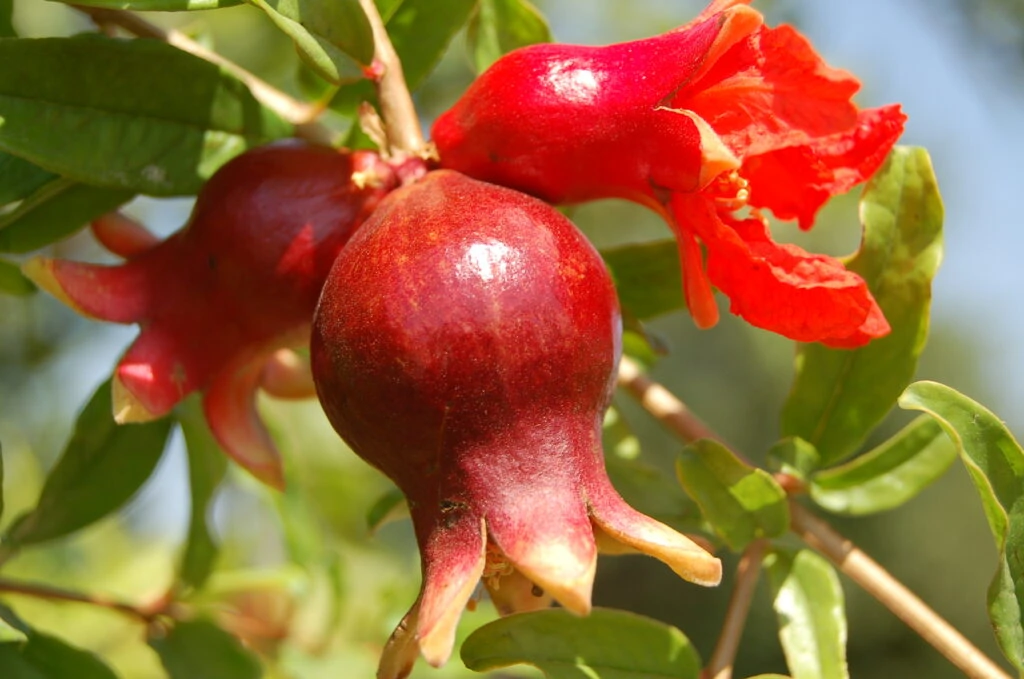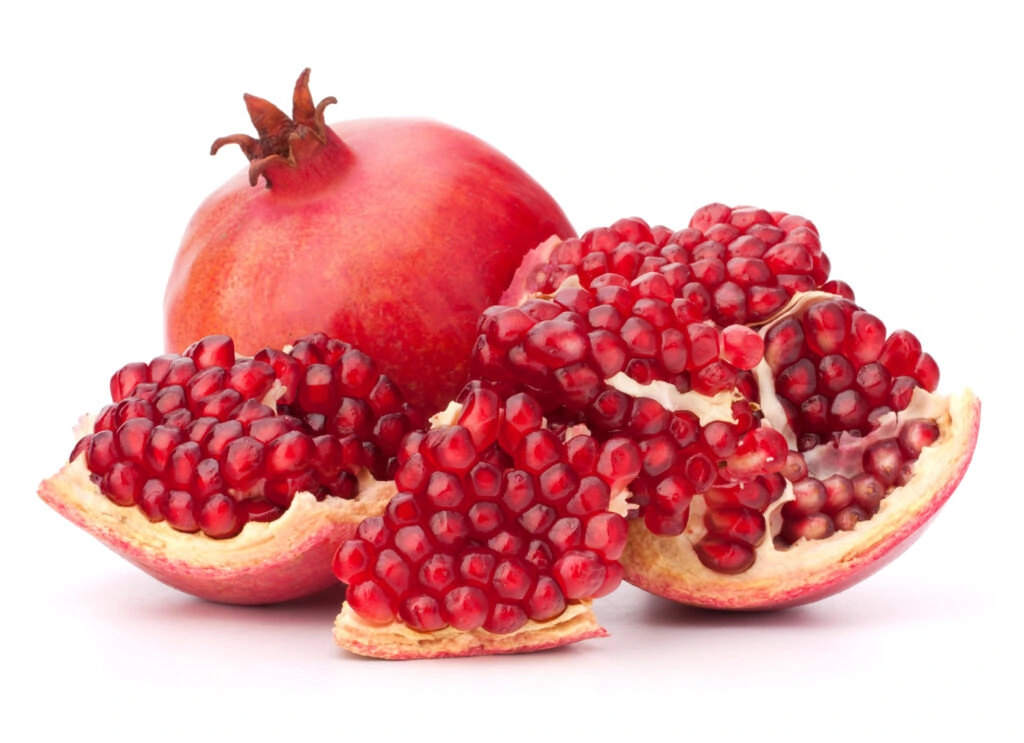Pomegranate oil production and extraction
The pomegranate belongs to the Lythraceae family and is a deciduous shrub that grows to a height of between 5 and 10 metres. The fruit itself is ruby-red in colour and has a leathery tough skin or husk, with an inner membrane and the seeds are surrounded by ‘sacs’ or arils (which contain both the seed and the juice around it). Pomegranate grows best in regions with long, hot, dry summers and produces more fruit after a cold winter. This makes it pomegranate growing more suitable to less tropical regions.
The pomegranate seed, sourced as a by-product from the juice extraction process is dried within three days of collection to ensure optimum quality. This seed is then packed and shipped to Fairoils’ oil facility in Kenya. Once in Kenya, the seed is tested to ensure it meets the high-quality parameters required. At Fairoils’ production facility the seed is cracked and
fed into a specialised oil press, specially designed for extracting oil from low-yielding seeds (such as pomegranate). The oil content is only 7% by weight, meaning more than 14kg of seed needs to be pressed to produce 1kg of oil. The produced oil is filtered and stored in stainless steel tanks capped with nitrogen gas, ready to be exported.
Pomegranate seed oil has a rich phytochemical composition and is a very functional ingredient. This combined with its oxidative stability (due to its conjugated molecular structure) makes pomegranate an active compound in cosmetic and neutraceutical products. Pomegranate contains high levels of a unique ingredient, Punicic Acid, an
omega 5 long-chain polyunsaturated fatty acid which has antioxidant properties. Pomegranate seed oil is rich in Vitamins C and E and contains phytosterols (including B-sitosterol, campesterol & stigmasterol), which can aide the skin to maintain moisture and ensure greater efficacy of skin products.






